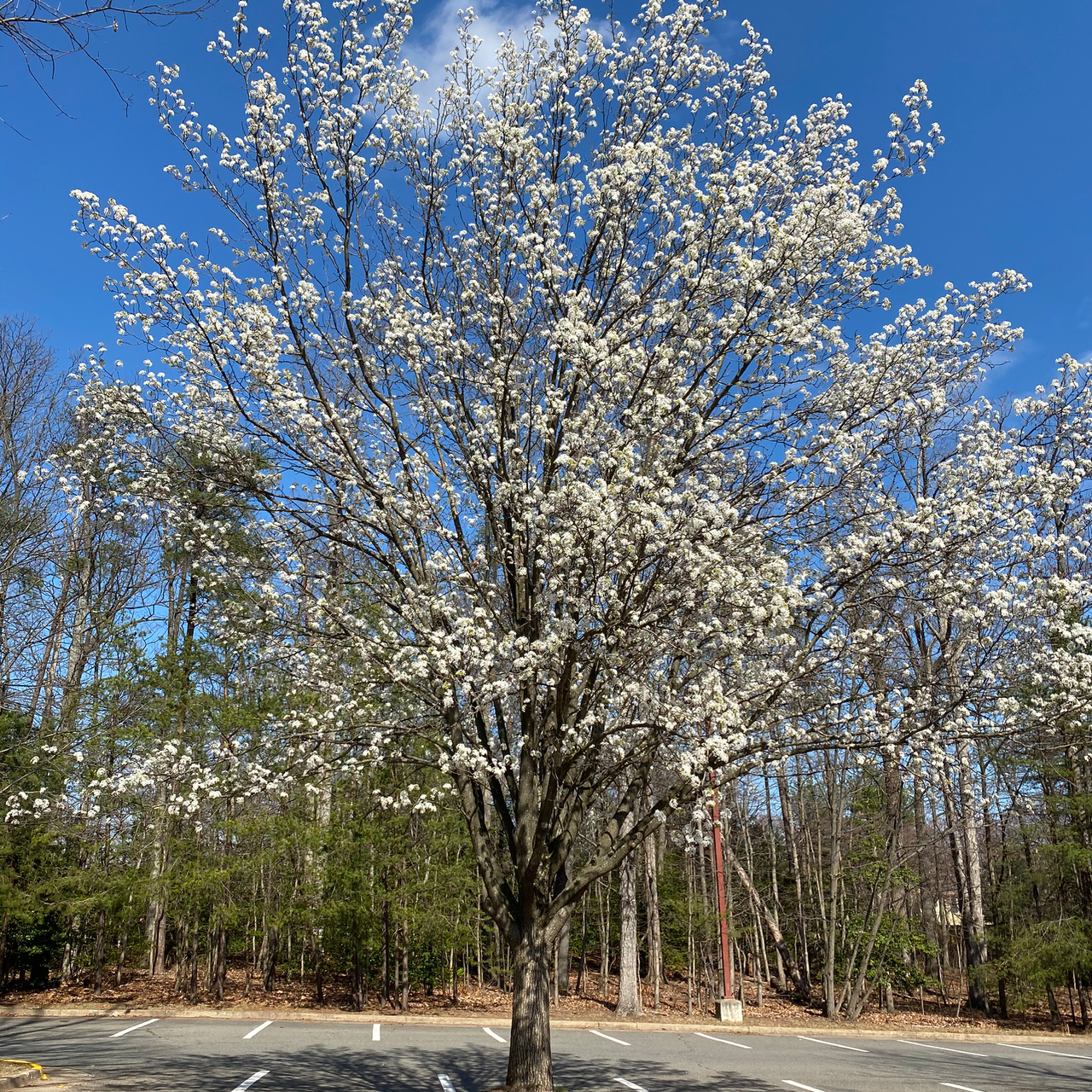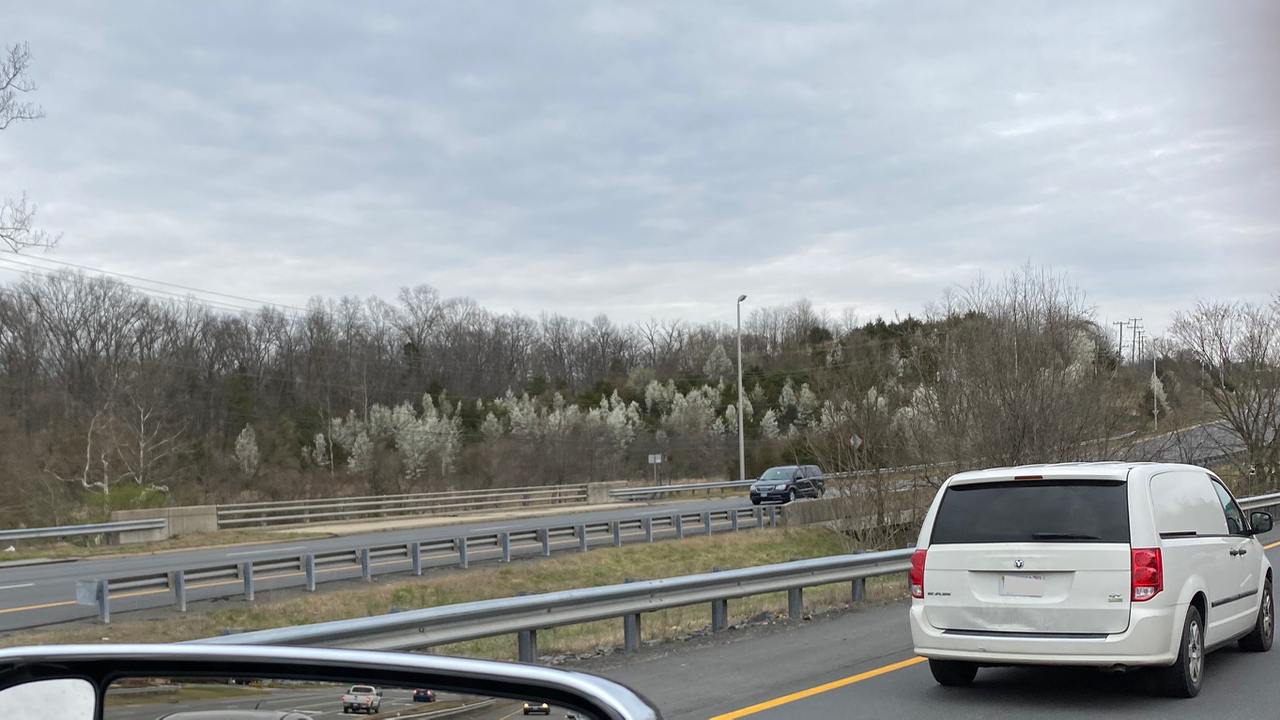I enjoy all of the Seasons for different reasons. In the spring, I love it when trees start to flower. First, it is a happy reminder that spring is on its way. Second, it always makes me think that we should add more flowering trees to our landscaping. One of the earliest trees to bloom is the Bradford Pear tree. They are really pretty in the spring. However, we would never plant one. I bet you didn’t know that the Bradford Pear tree is an invasive species. Read more to find out some interesting facts about these trees.
Bradford Pear or Callery Pear
The Callery Pear trees originated from China. Bradford Pear trees are a cultivar of the Callery Pear. Although sometimes used interchangeably, Bradford or Callery Pear are not the same. However, the negative aspects of both trees are the same.
I took the photo on the right at Aldrin Elementary School, in Reston, VA. These trees are relatively old. It seems like the growth pattern of the older pear trees is more typical of a natural tree canopy. At maturity they are usually 30-50 feet tall and 20-30 feet wide. Some of the newer cultivars have been bred for tear or cylindrical shaped canopies. However they all have the typical central trunks. The canopy on the first one is uneven. It has a major scar on the trunk where it lost a large branch.
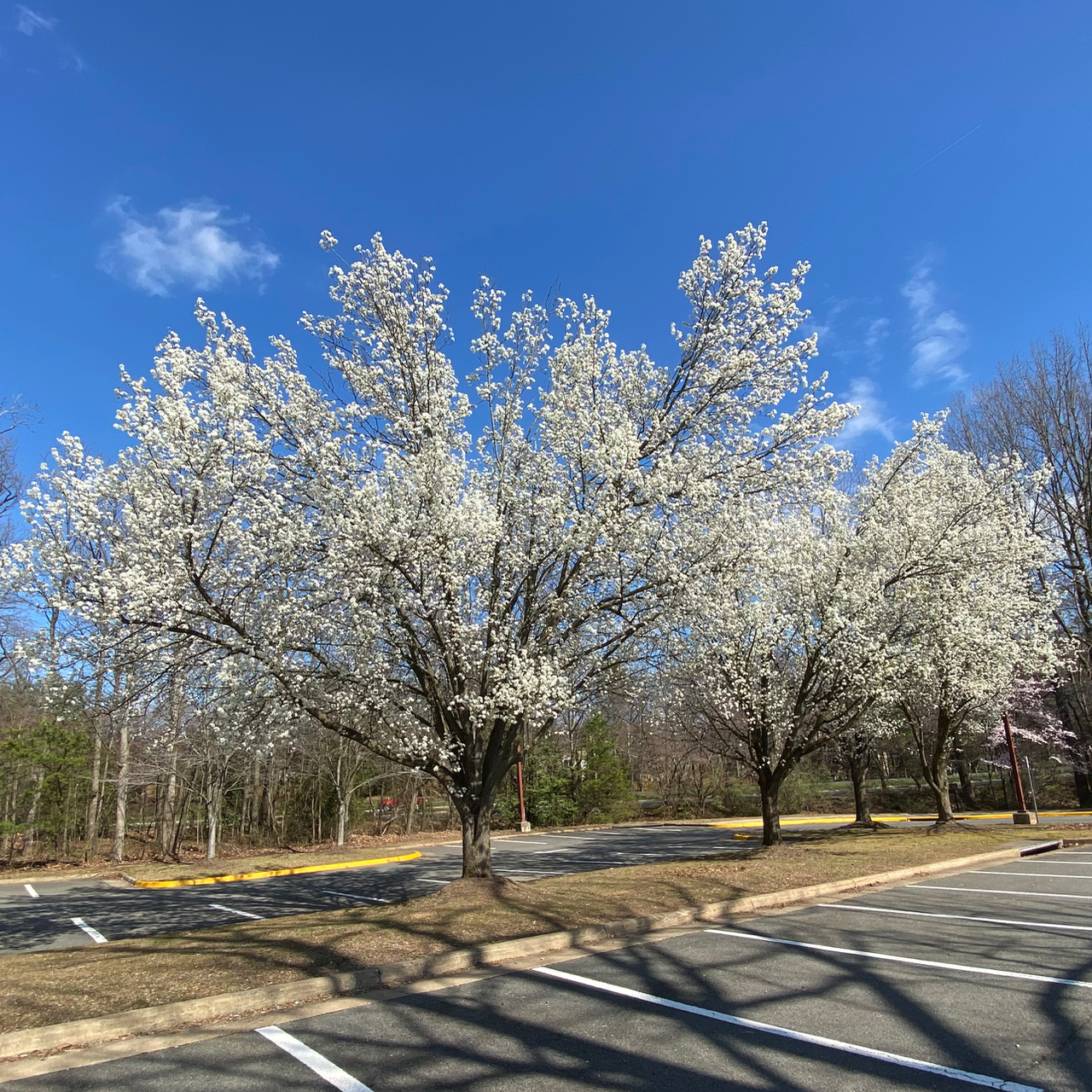
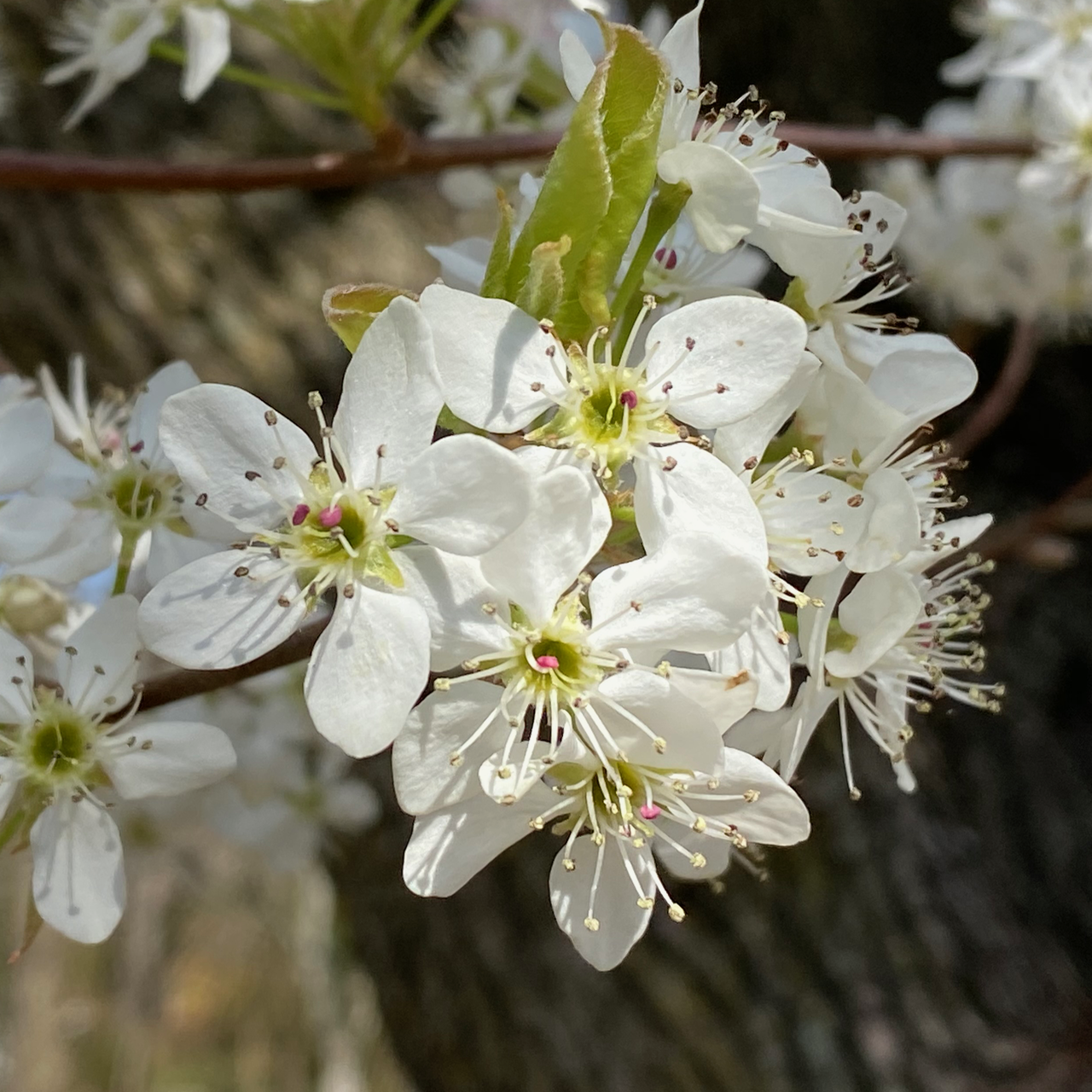
Flowers, Fruit, & Leaves
Flowers are white with 5 petals. The flowers are in dense clusters 2-4” in diameter. They bloom profusely in the early spring.
Leaves alternate on the stem. They are heart shaped with finely serrated edges. The top side is shiny green. They are paler on the underside.
Fruit are small round and brown colored. Although they are not for human consumption, birds love them.
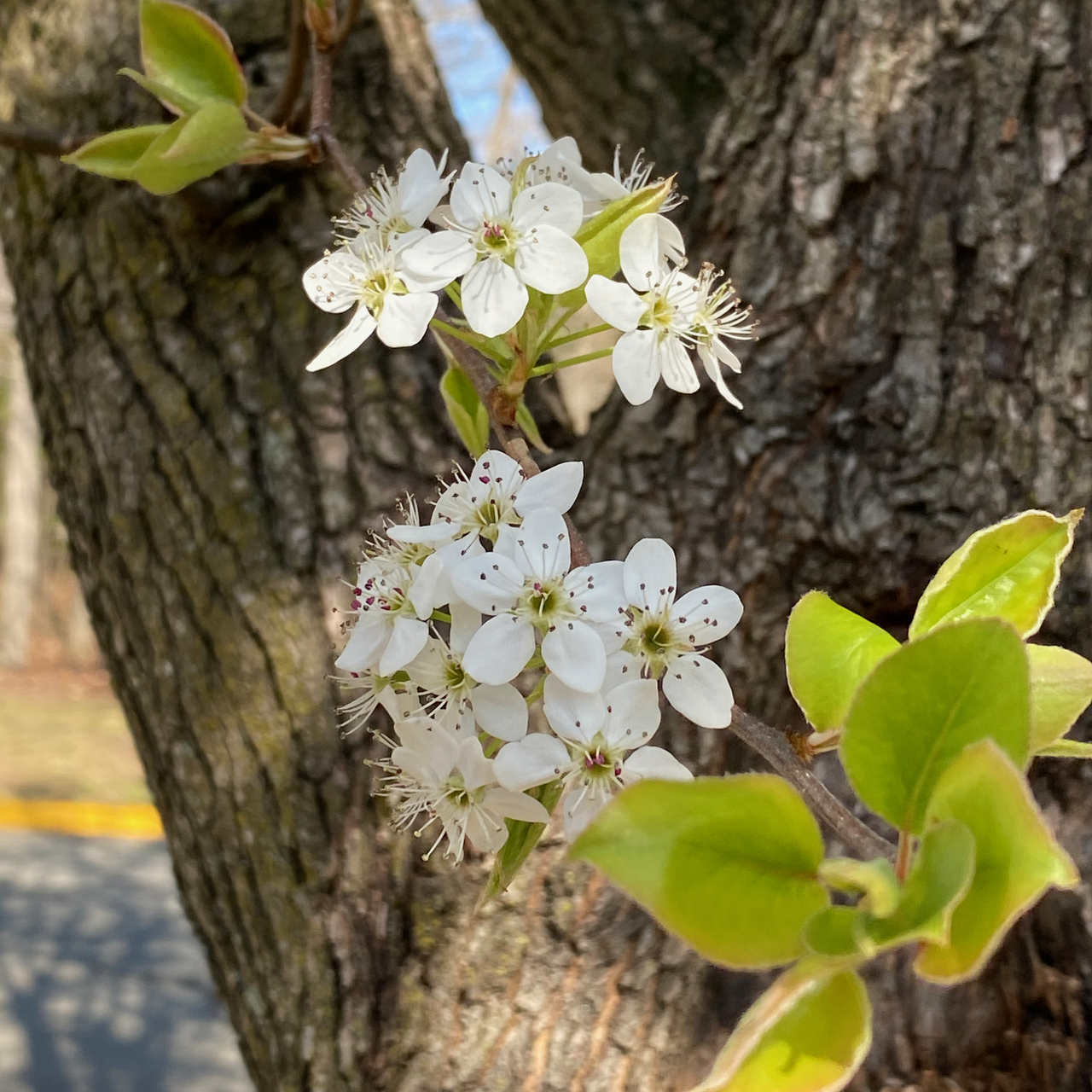
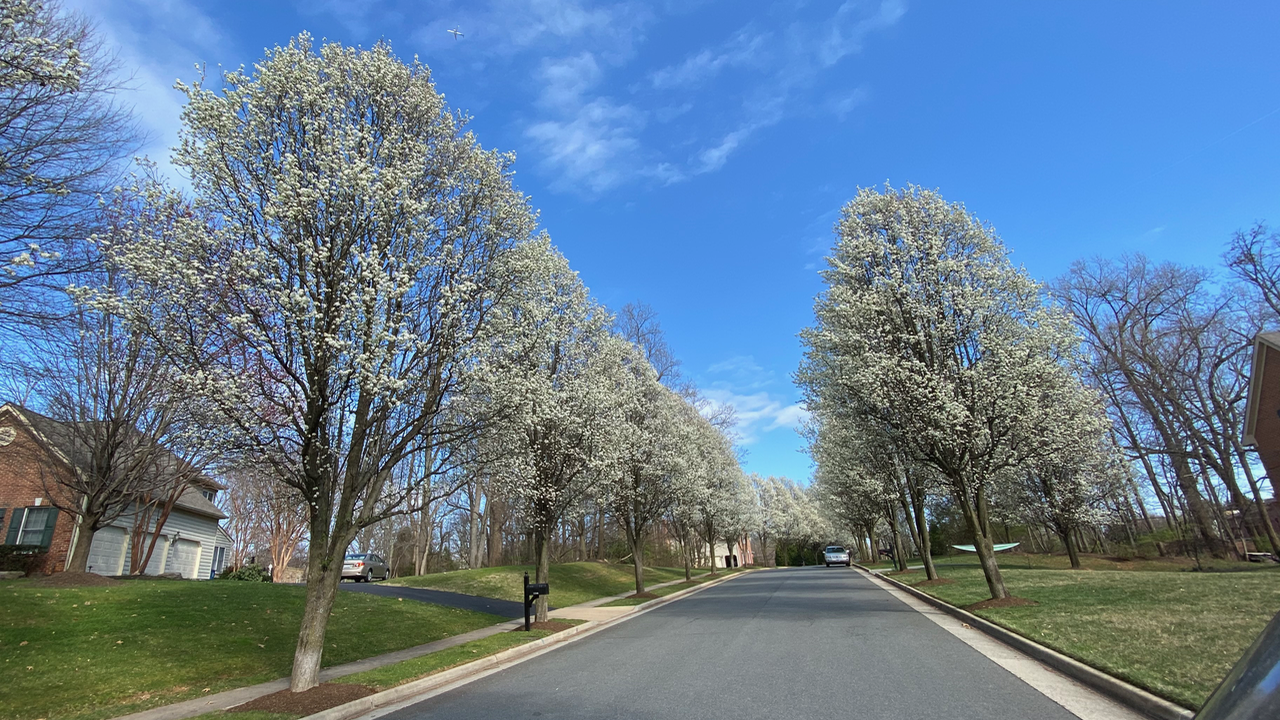
Bradford Pear Uses for Landscaping
Bradford Pear trees are a cheap fast fix for landscaping. There are a few reasons why, First, in the spring, they produce lots of pretty white flowers. Second, they grow quickly, Finally, they thrive in a variety of soil and environmental conditions. Unfortunately, they have a couple of negative characteristics that outweigh any benefits.
Reasons Not to Plant a Bradford Pear or one of its Cultivars
Bradford Pear Invasive Species
The Bradford Pear tree is now an invasive species in 26 or more states. The original trees were unable to reproduce. For a variety of reasons, intentional hybrids were bred. These hybrids are able to self and cross pollinate. As a result, they produce copious amounts of viable seeds with extreme genetic variety. Birds eat the seeds. Then they disperse seeds across the landscape. These trees thrive in a variety of conditions, therefore they easily take over natural areas. Unfortunately, they grow into a thorny, thicket. The result is an invasive species choking out native tress like Red Buds, Service Berries, and more. All of the white flowering trees in the photo are invasive pears.
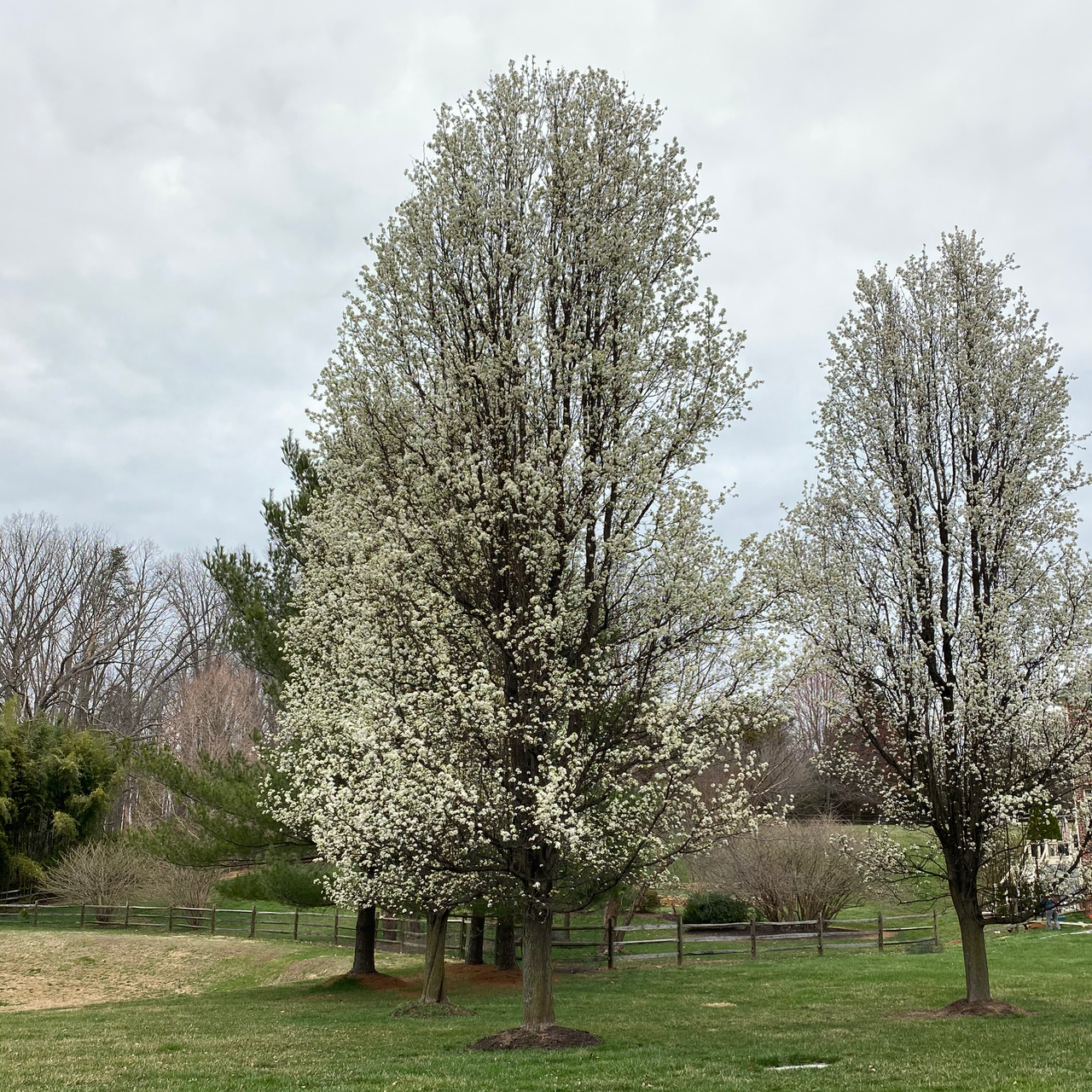
Faulty Branch Structure
First, their growth pattern is faulty. They have a central trunk. You’re probably wondering what is wrong with that? The problem is that numerous weak secondary branches grow from the central trunk. So, this creates weak crotches. They produce dense foliage which makes the secondary branches heavy. For that reason, the trees usually end up splitting apart. We get 1 or 2 calls after every windstorm to remove broken Bradford Pear trees.
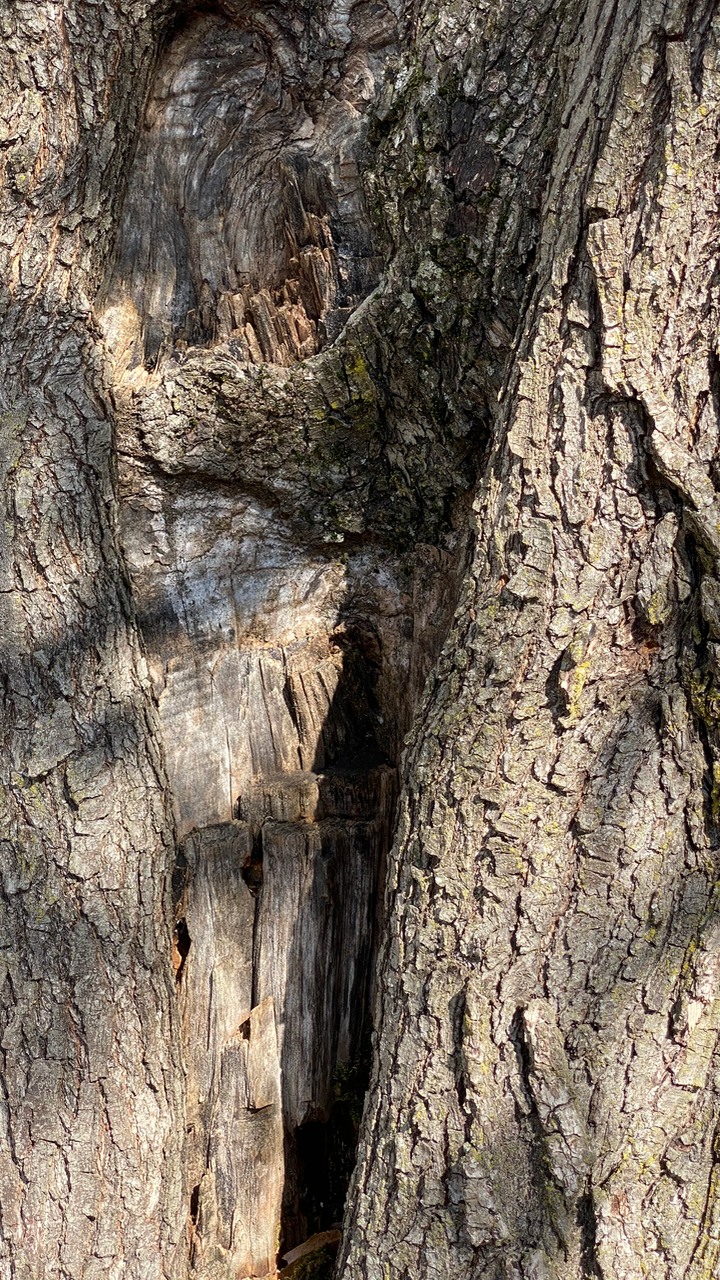
Enjoy the Flowers, Just don't Plant Bradford Pear Trees
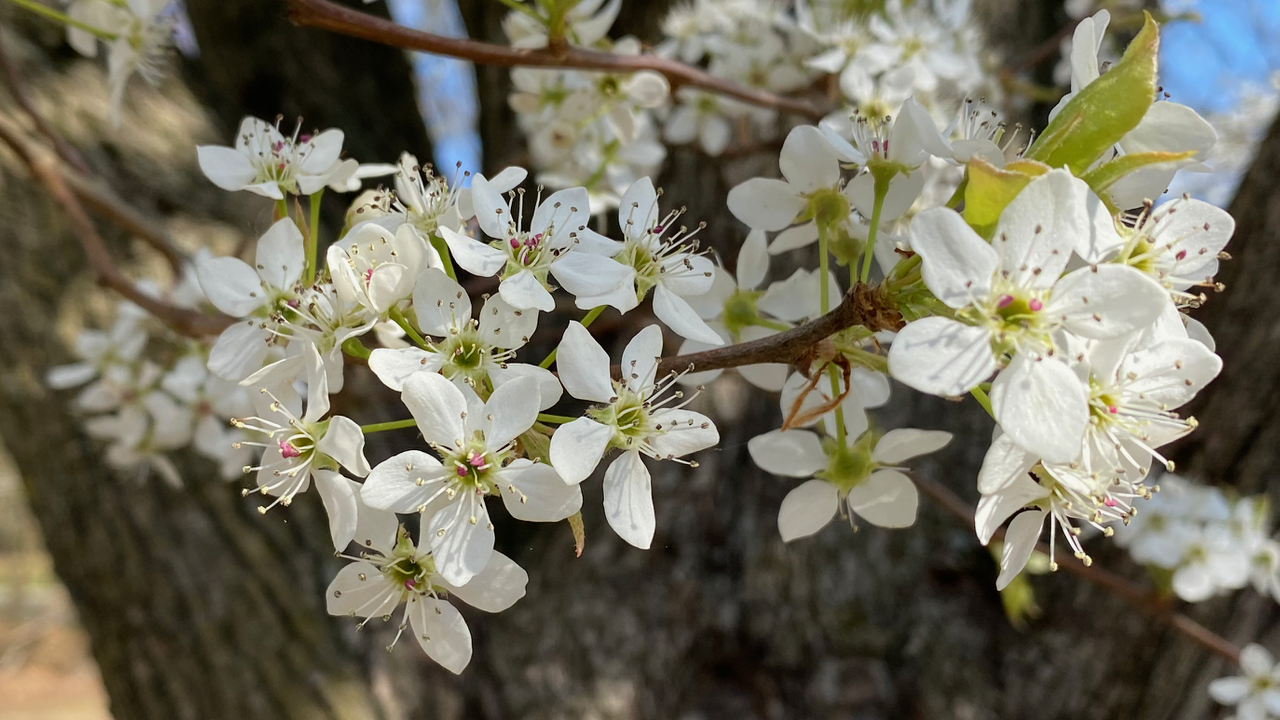
References:
Virginia Tech Dendrology, Callery Pear, access 03/14/2020, http://dendro.cnre.vt.edu/dendrology/syllabus/factsheet.cfm?ID=132
Pace University, Bradford Pear (AKA Callery Pear) (Pyrus calleryana), access 03/15/20, http://webpage.pace.edu/naturespace/Bradford%20Pear.htm
Missouri Department of Conservation, Callery Pear (Bradford Pear) Pyrus calleryana, access 03/15/20, https://nature.mdc.mo.gov/discover-nature/field-guide/callery-pear-bradford-pear
Invasive.org, Callery Pear, access 03/15/20, https://www.invasive.org/alien/pubs/midatlantic/pyca.htm
